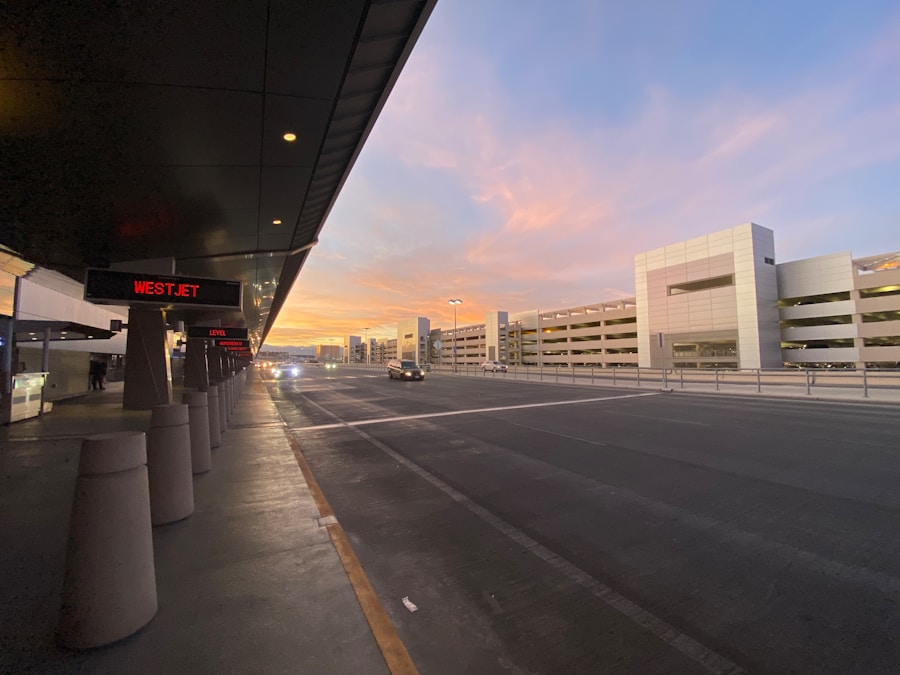When planning a trip to Las Vegas, the allure of the Strip and its vibrant nightlife often overshadows the logistics of getting there. While McCarran International Airport (LAS) is the primary gateway for travelers, alternative airports can offer unique advantages that may enhance your travel experience. These airports, often located within a reasonable distance from Las Vegas, can provide you with more options, potentially lower fares, and a less hectic travel environment.
As you embark on your journey, understanding the landscape of alternative airports can empower you to make informed decisions that align with your travel preferences. Exploring alternative airports means considering not just the destination but also the journey itself. You might find that these airports offer a more relaxed atmosphere, shorter security lines, and a chance to avoid the hustle and bustle typically associated with larger hubs.
Whether you’re a frequent flyer or planning your first trip to Las Vegas, knowing your options can lead to a smoother travel experience. In this article, we will delve into the pros and cons of using alternative airports, transportation options available, cost comparisons, amenities, and tips for making the best choice for your travel needs.
Key Takeaways
- Alternative airports can offer cost savings and convenience for travelers flying to Las Vegas.
- Pros of using alternative airports include cheaper flights, shorter security lines, and less crowded terminals.
- Cons of using alternative airports include longer travel times to reach Las Vegas and limited flight options.
- Distance and transportation options from alternative airports to Las Vegas vary, with some offering shuttle services and others requiring a rental car or taxi.
- When choosing the best alternative airport, consider factors such as flight availability, cost, transportation options, and amenities.
Pros and Cons of Using Alternative Airports
Using alternative airports can come with a variety of benefits that enhance your travel experience. One of the most significant advantages is often the cost savings. Many travelers find that flights into smaller airports can be more affordable than those into major hubs.
This is particularly true if you are flexible with your travel dates or willing to explore different airlines. Additionally, alternative airports tend to be less crowded, which means shorter wait times at security checkpoints and a more relaxed boarding process. This can be especially appealing if you’re traveling with family or simply want to avoid the stress that often accompanies busy terminals.
However, there are also some drawbacks to consider when opting for alternative airports. One potential downside is the distance from Las Vegas itself. While some alternative airports are relatively close, others may require a longer drive or additional transportation arrangements to reach your final destination.
This could add time and potentially cost to your overall travel plans. Furthermore, not all alternative airports offer the same level of amenities or services as larger airports, which could impact your comfort and convenience during layovers or delays. Weighing these pros and cons will help you determine whether an alternative airport aligns with your travel goals.
Distance and Transportation Options from Alternative Airports to Las Vegas

When considering alternative airports, understanding the distance from these locations to Las Vegas is crucial for planning your trip effectively. Airports such as Henderson Executive Airport (HND) and North Las Vegas Airport (VGT) are located much closer to the Strip than larger airports like Los Angeles International Airport (LAX) or Phoenix Sky Harbor International Airport (PHX). For instance, Henderson Executive Airport is just about 15 miles from downtown Las Vegas, making it an attractive option for travelers looking to minimize their travel time upon arrival.
Transportation options from these alternative airports vary but generally include rental cars, shuttles, and rideshare services like Uber and Lyft. If you prefer convenience, rideshare services can be a quick way to get into the city without the hassle of navigating public transportation or dealing with parking. Rental cars are also a popular choice for those who want the freedom to explore beyond the Strip during their stay.
However, if you’re looking for budget-friendly options, shuttle services may provide a cost-effective way to reach your hotel or other destinations in Las Vegas.
Cost Comparison of Flights to Alternative Airports
| Airport | Distance from City Center (miles) | Cost of Flight (average) |
|---|---|---|
| JFK International Airport | 15 | 300 |
| Newark Liberty International Airport | 16 | 320 |
| LaGuardia Airport | 8 | 280 |
| Stewart International Airport | 60 | 250 |
Cost is often a primary consideration when booking flights, and alternative airports can sometimes offer significant savings compared to larger hubs. For example, flying into smaller airports like St. George Regional Airport (SGU) or Laughlin Bullhead International Airport (IFP) may yield lower ticket prices due to less demand and competition among airlines.
It’s essential to compare fares across multiple platforms and consider factors such as baggage fees and additional costs associated with transportation from these airports to Las Vegas. While it’s tempting to choose the cheapest option available, it’s also important to factor in the total cost of your trip. Sometimes, a slightly higher fare into McCarran International Airport may be worth it if it means less time spent traveling to your final destination or more convenient flight times.
Additionally, consider any potential savings on accommodations or activities that may arise from staying closer to the Strip. By conducting thorough research and comparing costs across various airports, you can make an informed decision that aligns with your budget and travel preferences.
Amenities and Services at Alternative Airports
The amenities and services available at alternative airports can vary significantly from one location to another. While larger airports typically boast a wide range of dining options, shopping experiences, and lounges, smaller airports may offer a more limited selection. However, this doesn’t mean that alternative airports lack essential services altogether.
Many provide basic amenities such as free Wi-Fi, comfortable seating areas, and rental car services. For instance, Henderson Executive Airport features a modern terminal with business facilities and meeting rooms for travelers who need to conduct business while on the go. On the other hand, St.
George Regional Airport offers a cozy atmosphere with friendly staff who can assist you with any inquiries you may have. While you may not find high-end restaurants or luxury lounges at every alternative airport, you can still expect a welcoming environment that caters to your needs as a traveler.
Tips for Choosing the Best Alternative Airport

Assessing Your Travel Priorities
When selecting an alternative airport, it’s essential to consider your travel priorities. Are you looking to save money, prioritize convenience, or access specific amenities? By understanding what matters most to you, you can research alternative airports near Las Vegas and compare their offerings.
Flight Availability and Schedules
Another crucial factor to consider is flight availability and schedules. Some alternative airports may have limited flight options or fewer airlines operating out of them, which could impact your travel plans if you need flexibility in your itinerary.
Transportation Options and Overall Experience
Additionally, consider the transportation options available from each airport to Las Vegas, as this can affect your overall travel experience. By taking the time to evaluate these factors, you can confidently select an alternative airport that aligns with your needs.
Popular Alternative Airports near Las Vegas
Several popular alternative airports are worth considering when planning your trip to Las Vegas. Henderson Executive Airport (HND) is one of the closest options, catering primarily to private jets and charter flights but also accommodating commercial airlines on occasion. Its proximity to the Strip makes it an excellent choice for travelers seeking convenience without sacrificing comfort.
Another option is St. George Regional Airport (SGU), located about 120 miles northeast of Las Vegas in Utah. While it may be further away than some other alternatives, SGU often features competitive fares and serves as a gateway for travelers coming from various regions in the U.S.
Additionally, Laughlin Bullhead International Airport (IFP) is situated approximately 90 miles south of Las Vegas and offers flights primarily from regional carriers. Each of these airports presents unique advantages that cater to different traveler preferences.
Conclusion and Final Thoughts on Exploring Alternative Airports to Las Vegas
As you plan your next trip to Las Vegas, exploring alternative airports can open up new possibilities for a smoother travel experience. By weighing the pros and cons of using these airports, considering distance and transportation options, comparing costs, and evaluating amenities, you can make an informed decision that enhances your journey. Whether you prioritize affordability or convenience, there’s likely an alternative airport that aligns with your needs.
Ultimately, embracing the idea of flying into an alternative airport can lead to unexpected benefits—less crowded terminals, potential savings on airfare, and a more relaxed atmosphere as you begin your adventure in Las Vegas. So take the time to explore your options; you might just discover that an alternative airport is the perfect gateway to your next unforgettable experience in Sin City.
If you’re interested in learning more about alternative airports to Las Vegas, you may want to check out the article on Nevada Today. This website offers a variety of informative articles about travel and events in Nevada, including exploring exciting events in Las Vegas. It’s a great resource for anyone looking to discover new and unique travel options in the area.


